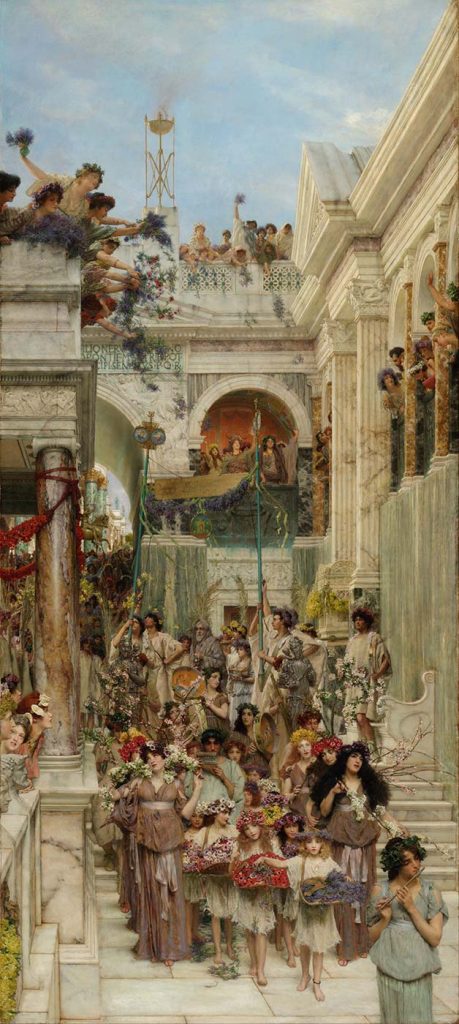
Spring by Sir Lawrence Alma-Tadema was created in 1894. The painting is in Getty Center, Los Angeles. The size of the work is 178,4 x 80,3 cm and is made of oil on canvas.
Barefoot young women and children adorned with flower crowns and playing musical instruments lead a procession through a city built of marble. Splashes of color, like the scarlet poppies and yellow daffodils, draw the eye across the canvas to explore the vibrant details of an ancient Roman festival, as meticulously reimagined by Dutch artist Lawrence Alma-Tadema. Spectators leaning over from the rooftops cheer and wave, while more reserved figures acknowledge the procession from the royal box under the central arch. The gold standard in front of them, raised on blue poles and decorated with purple garlands, bears a Latin inscription dedicated to Priapus, the god of nature, gardens, and fertility.
It is unclear exactly which festival Alma-Tadema meant to depict, but the many references from ancient Rome all indicate a springtime celebration of fertility and abundance, perhaps most resembling Floralia, honoring Flora, goddess of flowers. British May Day traditions were also rooted in the Floralia festival and were revived during the 1800s to celebrate spring and nature in the face of rapid industrialization. On May 1, children decked themselves and their village with flowers, danced, and crowned a May Queen. Such celebrations and this painting’s imagery connected contemporary British society to ancient Rome, an empire and aesthetic that the British empire saw as its predecessor and aspired to… Discover more in Getty Center.
The Artist: Sir Lawrence Alma-Tadema (1836 – 1912) was a Dutch painter of special British denizenship. Born in Dronrijp, the Netherlands. He trained at the Royal Academy of Antwerp, Belgium. He settled in England in 1870 and spent the rest of his life there. A classical-subject painter, he became famous for his depictions of the luxury and decadence of the Roman Empire, with languorous figures set in fabulous marbled interiors or against a backdrop of dazzling blue Mediterranean Sea and sky.
Though admired during his lifetime for his draftsmanship and depictions of Classical antiquity. His works fell into disrepute after his death, and only since the 1960s has it been re-evaluated for its importance within nineteenth-century British art… Read more
